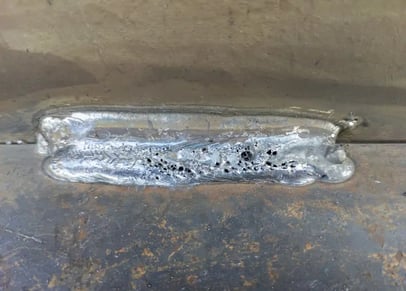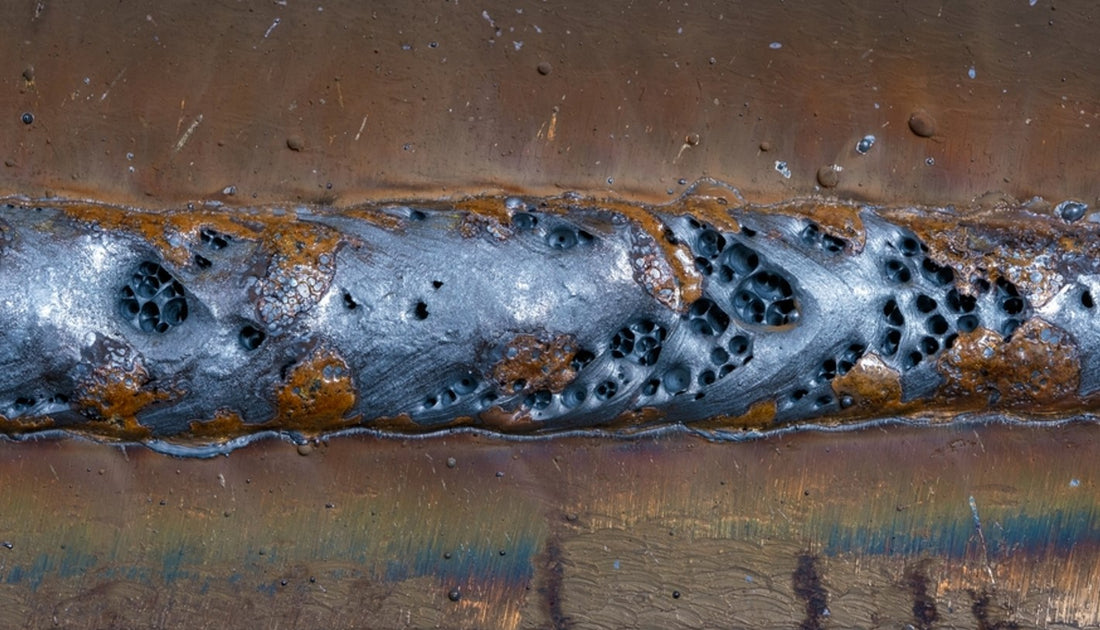Untangling the Enigma of Porosity in Welding: Tips for Minimizing Defects and Maximizing Quality
In the detailed globe of welding, porosity continues to be a consistent difficulty that can substantially impact the top quality and honesty of bonded joints. As we dive into the depths of porosity in welding, discovering the secrets to its avoidance and control will be vital for professionals seeking to grasp the art of high-grade weldments.
Understanding Porosity in Welding
Porosity in welding, an usual problem run into by welders, refers to the visibility of gas pockets or voids in the bonded material, which can endanger the stability and quality of the weld. These gas pockets are generally entraped throughout the welding process as a result of different factors such as improper shielding gas, contaminated base products, or wrong welding criteria. The formation of porosity can compromise the weld, making it vulnerable to breaking and rust, ultimately causing architectural failures.
By recognizing the value of maintaining appropriate gas securing, ensuring the cleanliness of base products, and enhancing welding settings, welders can substantially minimize the possibility of porosity formation. In general, a thorough understanding of porosity in welding is crucial for welders to generate top notch and long lasting welds.

Usual Reasons of Porosity
When examining welding processes for possible high quality issues, recognizing the usual causes of porosity is important for maintaining weld honesty and preventing structural failures. Porosity, defined by the visibility of cavities or voids in the weld steel, can substantially compromise the mechanical buildings of a welded joint.
One more prevalent reason of porosity is the presence of dampness and impurities externally of the base steel or filler material. When welding materials are not properly cleansed or are subjected to high levels of humidity, the evaporation of these pollutants during welding can produce gaps within the weld grain. Furthermore, welding at improper parameters, such as exceedingly high traveling rates or currents, can generate extreme disturbance in the weld pool, trapping gases and causing porosity. By attending to these usual causes via correct gas protecting, product preparation, and adherence to ideal welding parameters, welders can minimize porosity and boost the high quality of their welds.
Techniques for Porosity Prevention
Applying efficient safety nets is crucial in decreasing the incident of porosity in welding processes. One method for porosity prevention is guaranteeing proper cleansing of the base metal prior to welding. Pollutants such as oil, oil, corrosion, and paint can bring about porosity, so complete cleaning using appropriate solvents or mechanical methods is essential.

An additional key safety net is the selection of the ideal welding consumables. Utilizing high-quality filler products and protecting gases that are ideal for the base metal and welding process can considerably reduce the threat of porosity. Furthermore, preserving appropriate welding specifications, such as voltage, present, take a trip rate, and gas flow price, is important for porosity prevention. Differing the advised setups can cause incorrect gas go to my site coverage and insufficient blend, leading to porosity.
Additionally, utilizing proper welding strategies, such as preserving a constant traveling rate, electrode angle, and arc size, can assist avoid porosity (What is Porosity). Ample training of welders to guarantee they follow finest techniques and top quality control treatments is additionally necessary in decreasing porosity problems in welding

Finest Practices for Quality Welds
One secret technique is maintaining proper cleanliness in the welding location. Thoroughly cleaning the work surface and bordering location prior to welding can help minimize these problems.
One more best practice is to meticulously choose the suitable welding parameters for the certain products being joined. Proper parameter option guarantees ideal weld penetration, combination, and total quality. Using top notch welding consumables, such as electrodes and filler steels, can significantly influence the last weld quality.
Relevance of Porosity Control
Porosity control plays a critical role in making certain the integrity and high quality of welding joints. Porosity, identified by the presence of cavities or gaps within the weld metal, can dramatically jeopardize the mechanical properties and structural stability of the weld. Excessive porosity damages the weld, making it more at risk to this content breaking, rust, and overall failure under functional tons.
Reliable porosity control is necessary for maintaining the wanted mechanical residential properties, such as toughness, ductility, and durability, of the bonded joint. What is Porosity. By reducing porosity, welders can improve the overall top quality and reliability of the weld, making sure that it satisfies the performance requirements of the designated application
Moreover, porosity control is crucial for attaining the wanted aesthetic look of the weld. Too much porosity not only weakens the weld yet likewise takes away from its aesthetic allure, which can be crucial in industries where looks are essential. Correct porosity control strategies, such as making use of the appropriate shielding gas, regulating the welding specifications, and making sure correct cleanliness of the base try these out materials, are crucial for producing top quality welds with marginal problems.

Verdict
In final thought, porosity in welding is a common defect that can jeopardize the high quality of the weld. It is necessary to regulate porosity in welding to make sure the honesty and stamina of the final item.
Comments on “How to Recognize What is Porosity in Welding and Improve Your Method”